Protea Banks Diving… One of the best places in South Africa to dive with sharks. And where, depending on the time of year, you can see up to seven different varieties. Including Ragged-Tooth sharks, “Oceanic” Blacktips, Zambezi (Bull) sharks and Tiger sharks. Plus two varieties of hammerheads – Scalloped and Great Hammerhead sharks.
Often these varieties are in large, if not astonishing numbers. Particularly the Scalloped Hammerheads and the Ragged-Tooth sharks.
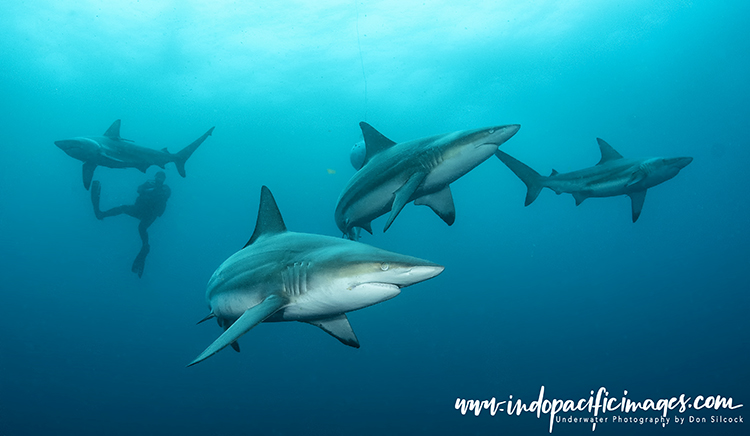
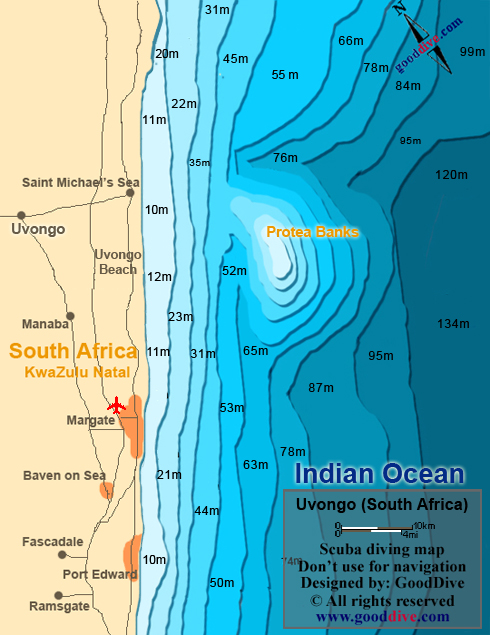
The Protea Banks are a large submerged shoal, about 800m wide and 6km long. It is located some 8 km offshore from the seaside town of Margate in KwaZulu-Natal province.
The average depth is around 30m, but some key locations are much deeper. So bottom times, air consumption and decompression limits are hardly abstract issues when diving there.
The shoal rises up from the short but sloping South African continental shelf. Just before it plummets down in to the 3500m deep Natal Valley. Creating an almost perfect aggregation point for the rich marine life of the east coast.
It really is quite a place… But it must be said that it is adventurous diving in what are often quite challenging conditions.
Protea Banks Diving – The Agulhas Current
The Protea Banks owes it biodiversity to one of the world’s most powerful oceanic currents. One that moves almost 70 million tons of water a second… as it surges down the east coast of South Africa.
Often described as the African equivalent of the Gulf Stream. Its name is the Agulhas Current and it forms to the south-west of the huge island of Madagascar. Where the powerful Mozambique Current merges with the equally strong East Madagascar Current.
From that tumultuous beginning, the Agulhas runs straight down the 2000km long east coast of South Africa. With surface speeds of up 8km an hour, it brings with it warm Indian Ocean water rich with nutrients. And where those waters touch offshore reef systems along the edge of the narrow South African continental shelf. They are the catalyst and life-blood for some incredible ecosystems.
And one of the very richest of those ecosystems is the Protea Banks…
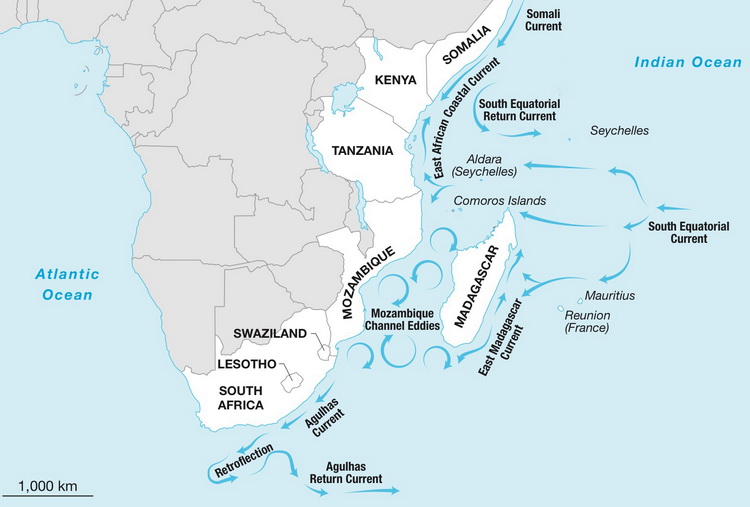
Protea Banks Diving – Overview
There are basically two areas where recreational diving can be done with safety at the Protea Banks. These are called the Northern and the Southern Pinnacles. And, as their name suggests are the highest peaks (and therefore the shallowest parts) of the large submerged shoal that forms the Protea Banks. Even then, the minimum depth is around 30m and some of the best things to see are in 36m.
But the laws of physics are just that – laws… So the huge volume of water that forms the Agulhas Current gathers speed as it passes over those pinnacles. Which means one very clear thing, increased water velocity and stronger currents. Diving in strong currents, in deep waters and in an offshore area – where the next landfall is Antarctica – is not something to consider lightly!
If ever there was a place to listen carefully to the pre-dive safety briefing and follow instructions, the Protea Banks is it!
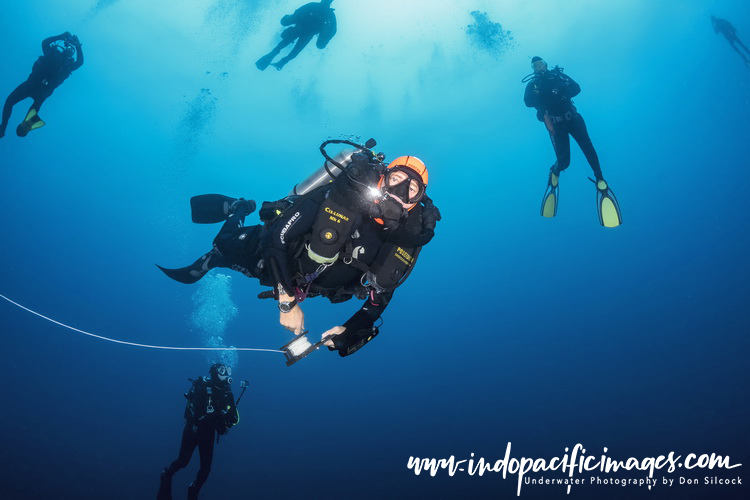
The Southern Pinnacle
This is where you will do your first dive at the Protea Banks. Because of the two pinnacles it is the safest and easiest to dive – so think of it as a check-out dive. Unlike the northern pinnacle where there is a very specific location to start from, the southern pinnacle is more of a straightforward drift dive.
There is a well established main route that takes in the best spots along the way. But there is a variety of things to see generally as you drift along in the current. So sticking to that main route is not as important as it is on the northern pinnacle.
During that drift you will often see Zambezi sharks cruising around the reef. Plus, from October through to April, Giant Hammerheads make an appearance. Along with huge schools of both Scalloped and Smooth Hammerheads.
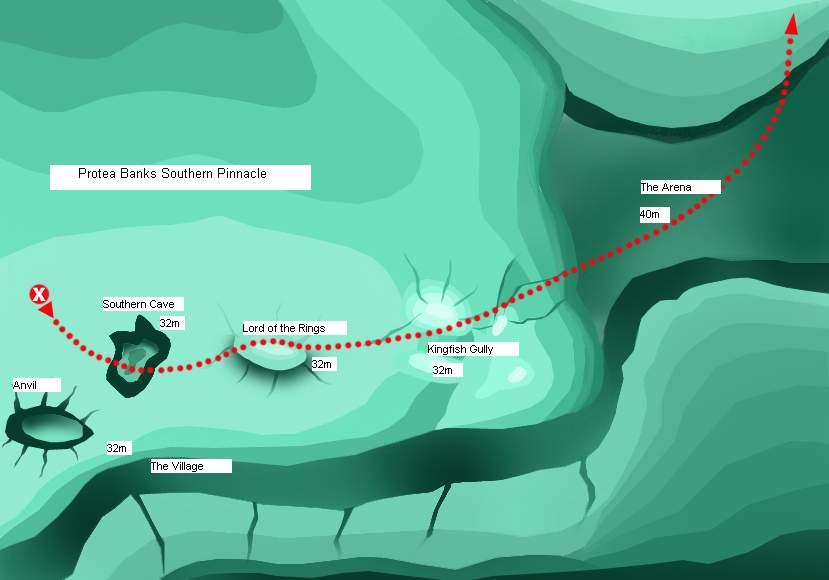
The Northern Pinnacle
This is the main and most adventurous part of the Protea Banks. And in terms of both your diving and listening skills, it is where the rubber meets the road. The starting point is the first or main cave which, compared to the overall area of the Northern Pinnacle, is quite small. And, as the boat will be drifting along in currents that can reach 8km/hour, it is not the easiest place to find.
The key elements of success to getting on to the first cave is ensuring the boat in to exactly the right position. GPS is used to establish location and the strength of the current. Followed by a rapid negative entry, equally fast descent and not losing sight of the Divemaster and SMB. All which is carefully explained at the comprehensive pre-dive briefing at Shelly Beach. And then reinforced on arrival – hence the listening skills… The diving skills come in to play once in the water, but if you have listened it will all go to plan.
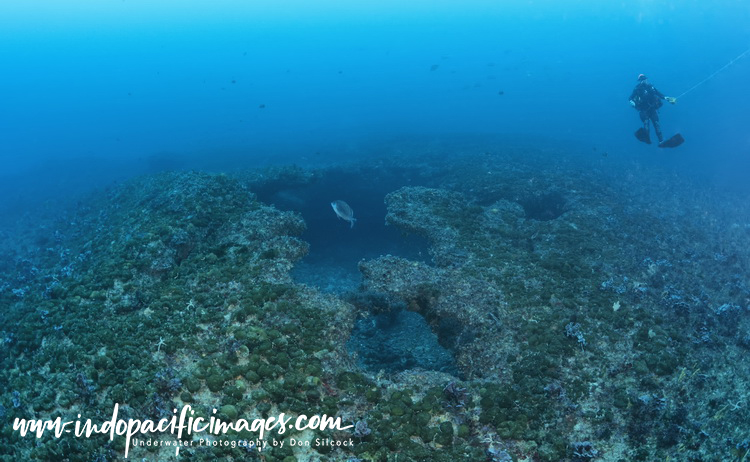
The first cave is the very best place to see Ragged Tooth sharks at the Protea Banks. Plus from March through to June Tiger sharks also hang out around the Northern Pinnacle. Overall though the best time to dive the Northern Pinnacle is between May and November.
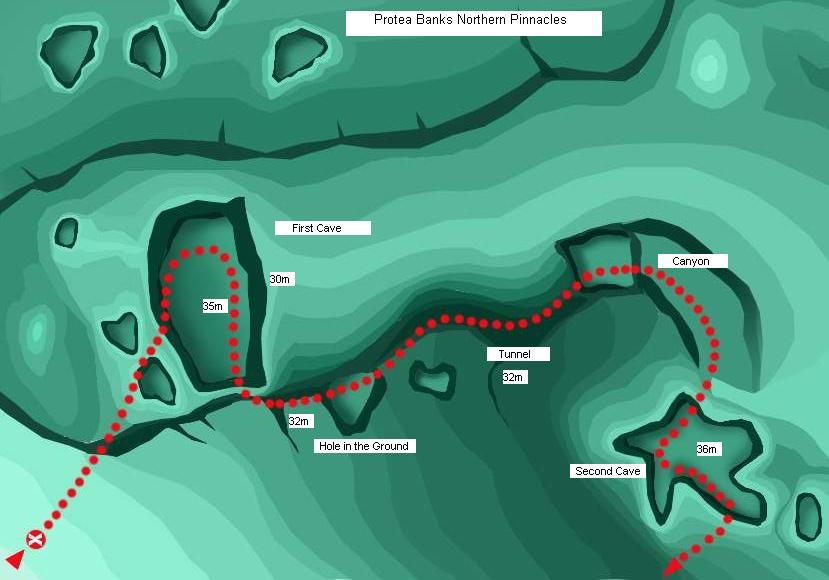
Who to Dive With?
There are two well-established Shelly Beach based dive operators who specialize in diving the Protea Banks. African Dive Adventures run by Roland and Beulah Mauz and Aqua-Planet run by Kym Pollard.
All my experience of Protea Banks diving has been with African Dive Adventures and I have nothing but praise for the way they conduct their operation. No experience with Aqua-Planet so cannot vouch for them.
Roland and Beulah have been diving the Protea Banks for over 20 years and know it better than anybody else. It’s not easy taking people out to dive safely in deep water, with strong currents and lots of sharks… But they have refined their operation, together with all the behind the scenes logistics that support it, extremely well.

Back To: Complete Guide to Diving Protea Banks
